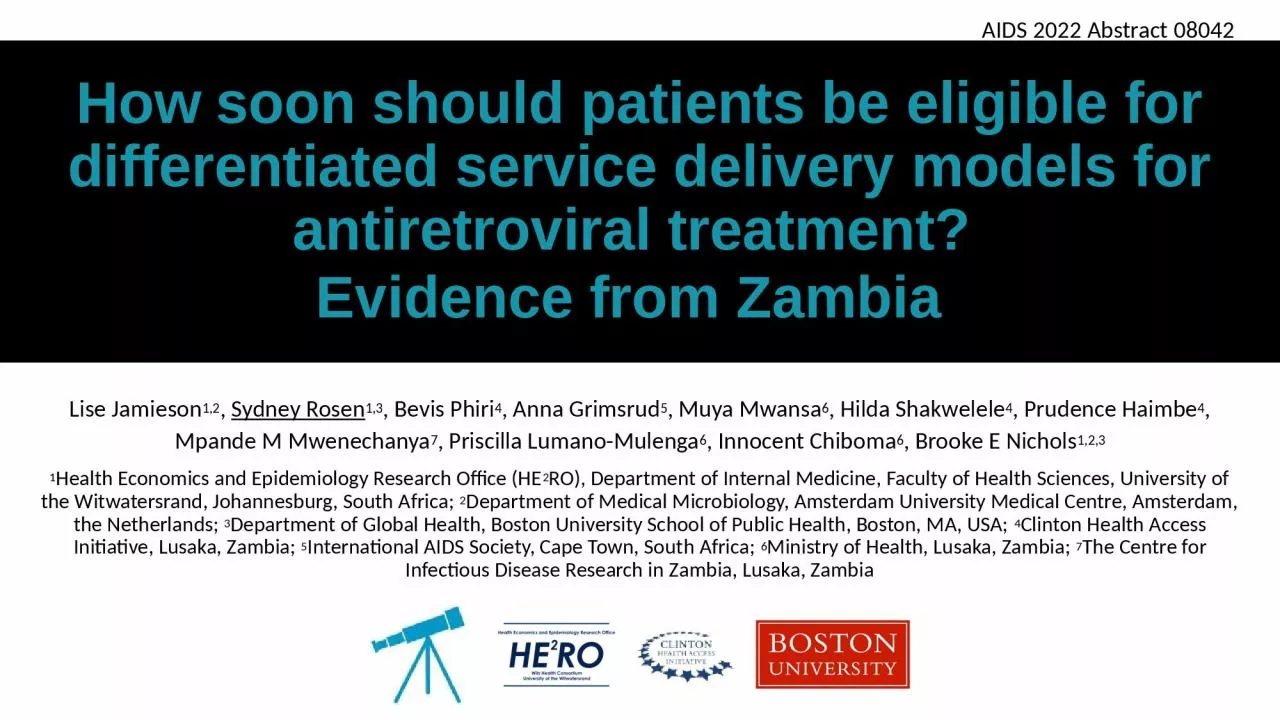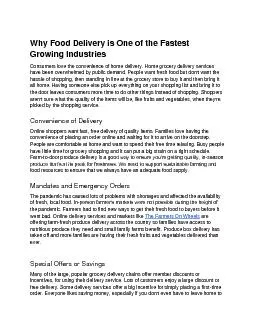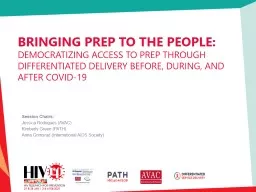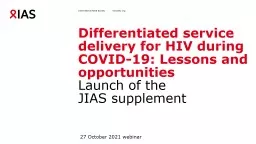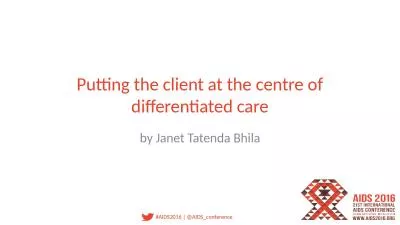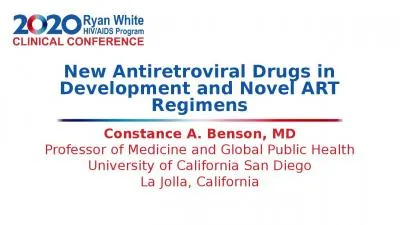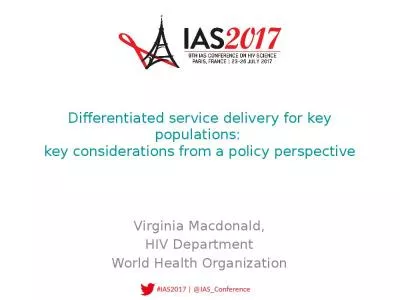PPT-How soon should patients be eligible for differentiated service delivery models for antiretroviral
Author : ximena | Published Date : 2023-12-30
Evidence from Zambia Lise Jamieson 12 Sydney Rosen 13 Bevis Phiri 4 Anna Grimsrud 5 Muya Mwansa 6 Hilda Shakwelele 4 Prudence Haimbe 4 Mpande M Mwenechanya
Presentation Embed Code
Download Presentation
Download Presentation The PPT/PDF document "How soon should patients be eligible for..." is the property of its rightful owner. Permission is granted to download and print the materials on this website for personal, non-commercial use only, and to display it on your personal computer provided you do not modify the materials and that you retain all copyright notices contained in the materials. By downloading content from our website, you accept the terms of this agreement.
How soon should patients be eligible for differentiated service delivery models for antiretroviral: Transcript
Download Rules Of Document
"How soon should patients be eligible for differentiated service delivery models for antiretroviral"The content belongs to its owner. You may download and print it for personal use, without modification, and keep all copyright notices. By downloading, you agree to these terms.
Related Documents

